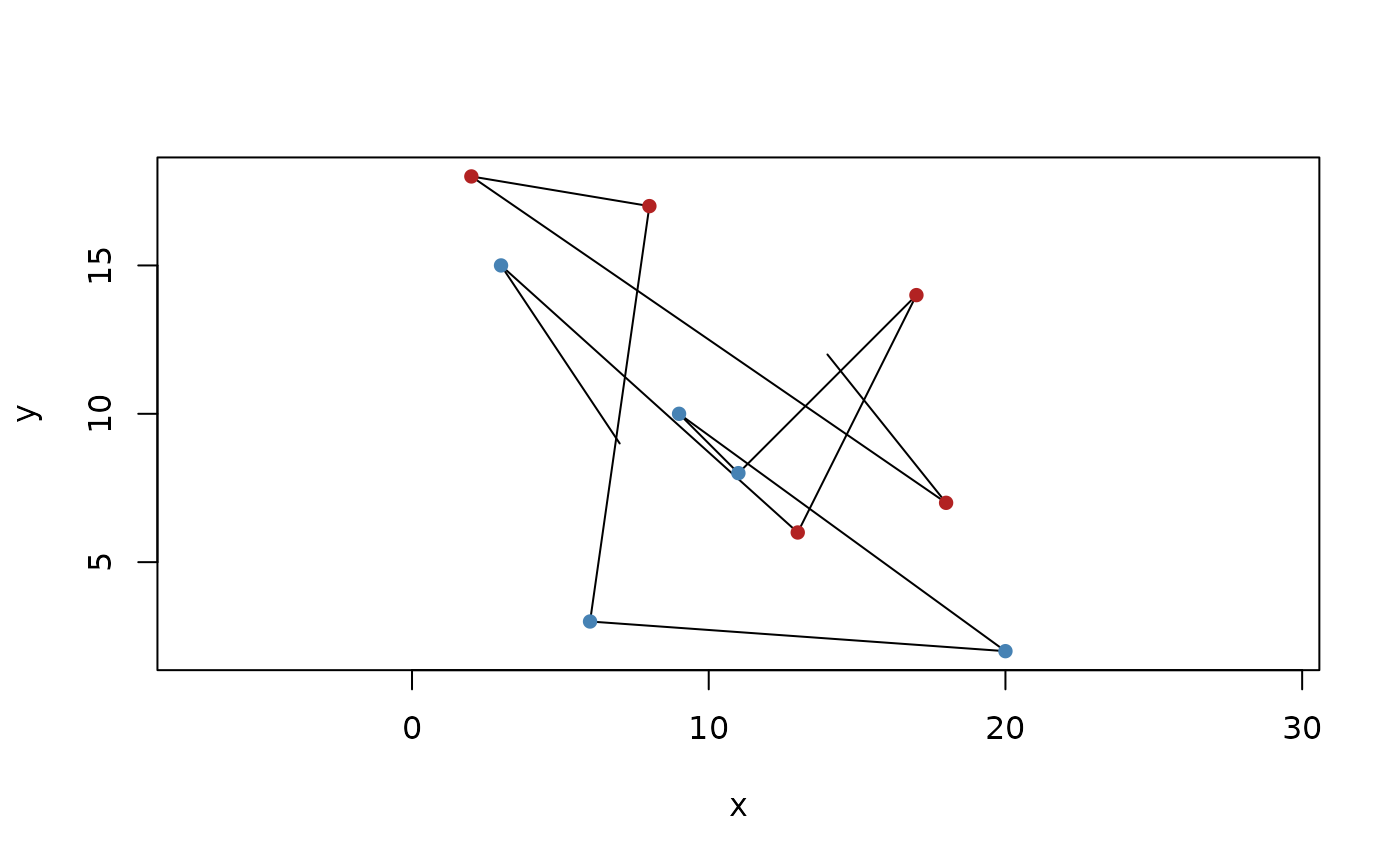Query the side of the turn constructed by three consecutive points
Source:R/geometry_predicates.R
geometry_turns.RdIn 2D the bend three consecutive points form can be oriented either to the
left or two the right. Asking whether it takes a left turn is equivalent to
asking whether z lies on the positive side of the supporting line of
x->y. euclid provides two predicate functions to check whether left or
right turns are constructed from three given point vectors (note that
collinear points will be FALSE for both predicates). It also provides a
function that calculate turn orientation along a single vector of points. The
result of this are given as: 1 (left), 0 (collinear), or -1 (right).
Note that the output of turn_along() is two elements shorter than the
input.
See also
Other Predicates:
collinear(),
constant_in,
geometry_class,
has_intersection(),
in_order(),
is_degenerate(),
location_predicates,
parallel()
Examples
p <- point(sample(20, 12), sample(20, 12))
turns_left(p[1:4], p[5:8], p[9:12])
#> [1] TRUE TRUE TRUE FALSE
turn_along(p)
#> [1] -1 1 1 -1 -1 -1 -1 1 1 1
plot(segment(p[-12], p[-1]))
euclid_plot(p[-c(1, 12)][turn_along(p) == 1], pch = 16, col = "firebrick")
euclid_plot(p[-c(1, 12)][turn_along(p) == -1], pch = 16, col = "steelblue")
